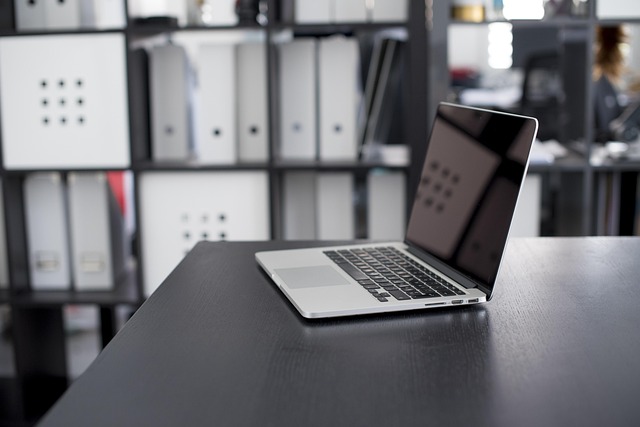Maximizing Small Spaces: The Art of Micro Home Offices
In today's fast-paced world, the concept of the home office has undergone a significant transformation. As urban living spaces shrink and remote work becomes increasingly common, homeowners and renters alike are facing the challenge of creating functional workspaces within limited square footage. This shift has given rise to the micro home office trend, a creative approach to carving out productive areas in even the tiniest of apartments or houses. The micro home office movement is not just about squeezing a desk into a corner; it's a holistic design philosophy that emphasizes efficiency, flexibility, and style. From innovative furniture solutions to clever storage hacks, this trend is reshaping how we think about work-life balance in compact living environments.

The Rise of Micro Home Offices
The concept of micro home offices gained traction in the early 2010s, coinciding with the growth of the gig economy and the increasing acceptance of remote work arrangements. Urban migration and rising housing costs in major cities further fueled the need for compact workspace solutions. The COVID-19 pandemic accelerated this trend, as millions of workers suddenly found themselves needing to create impromptu home offices in spaces not originally designed for work purposes. This global shift highlighted the importance of adaptable living spaces and sparked a wave of innovation in small-scale office design.
Smart Furniture Solutions
At the heart of the micro home office movement is furniture that prioritizes functionality and space-saving features. Wall-mounted desks have become increasingly popular, offering a work surface that can be folded away when not in use. These desks often come with built-in storage compartments or shelving units, maximizing vertical space. Another innovative solution is the Murphy bed desk combo, which allows a bedroom to double as an office during the day. Modular furniture systems have also gained traction, offering customizable configurations that can adapt to changing needs and space constraints.
Vertical Space Utilization
In micro home offices, every inch counts, and vertical space becomes a valuable asset. Designers and homeowners are increasingly turning to wall-mounted shelving systems, pegboards, and magnetic walls to create storage and organization solutions that don’t eat into floor space. Floating shelves can house books, supplies, and decorative items while keeping the workspace clutter-free. Some innovative designs incorporate retractable or foldable elements, such as wall-mounted monitor arms or keyboard trays, which can be tucked away when not in use.
Multi-functional Zones
The key to successful micro home office design lies in creating multi-functional spaces that can seamlessly transition between work and personal life. Room dividers and partitions play a crucial role in this aspect, allowing for the creation of distinct zones within a single room. Acoustic panels or bookshelves can serve as both sound barriers and storage solutions, while sliding doors or curtains offer privacy when needed. Some designers are experimenting with rotating walls or movable partitions that can completely transform a space with minimal effort.
Technology Integration
Technology plays a pivotal role in making micro home offices efficient and comfortable. Wireless charging pads built into desks or side tables eliminate cord clutter, while smart lighting systems can be programmed to optimize productivity and reduce eye strain. Compact, all-in-one printers and scanners help conserve space, and cloud storage solutions reduce the need for physical file storage. Voice-activated smart home devices can control various aspects of the workspace, from adjusting temperature to managing schedules, further streamlining the work-from-home experience.
Biophilic Design Elements
Despite the constraints of small spaces, the importance of incorporating nature into work environments has not been overlooked in micro home office design. Biophilic elements, which connect occupants to the natural environment, have been shown to reduce stress and increase productivity. In micro offices, this often takes the form of compact plant walls, small desktop terrariums, or strategically placed potted plants. Some designers are experimenting with hydroponic systems that allow for vertical herb gardens, combining functionality with natural aesthetics.
Color Psychology and Lighting
The strategic use of color and lighting can significantly impact the perception of space and mood in a micro home office. Light, neutral colors are often favored for their ability to make spaces feel larger and brighter. However, accent walls or colorful accessories can add personality and energy to the workspace. Natural light is highly prized in micro office design, with many solutions focusing on maximizing window access. When natural light is limited, layered artificial lighting becomes crucial, combining ambient, task, and accent lighting to create a well-lit and visually interesting environment.
The Future of Micro Home Offices
As urban populations continue to grow and housing sizes in many areas continue to shrink, the demand for innovative micro home office solutions is likely to increase. Future trends may include more integration of virtual and augmented reality technologies, allowing for immersive work experiences that transcend physical space limitations. Additionally, advancements in materials science may lead to the development of even more compact and flexible furniture solutions. The line between home and office may continue to blur, with entire apartment designs centered around the concept of adaptable living and working spaces.
In conclusion, the micro home office trend represents a creative response to the challenges of modern urban living and changing work dynamics. By embracing innovative design solutions, smart technology integration, and a holistic approach to space utilization, even the smallest living spaces can be transformed into productive and inspiring work environments. As this trend evolves, it will likely continue to influence broader conversations about work-life balance, urban planning, and the future of remote work.





